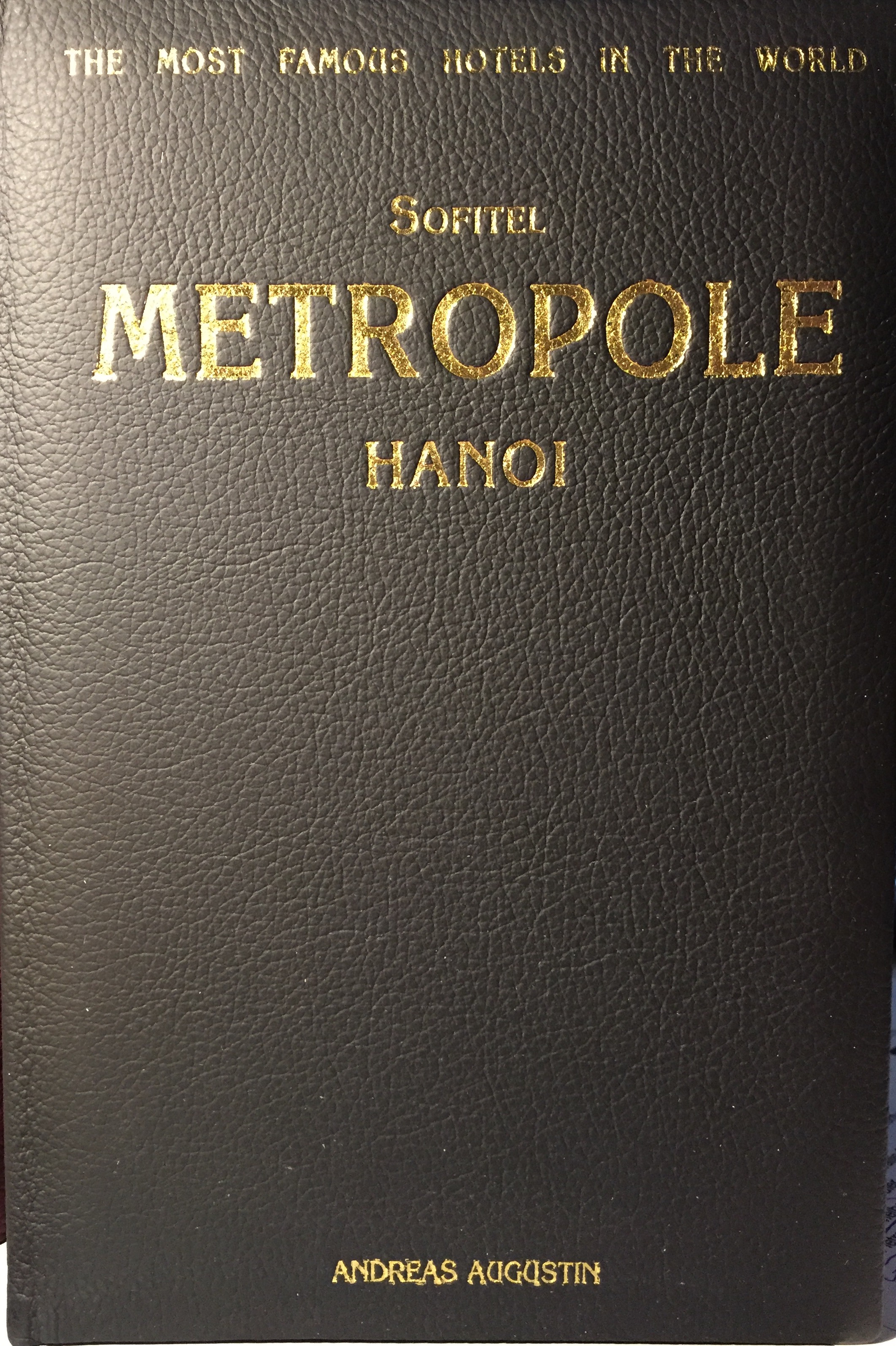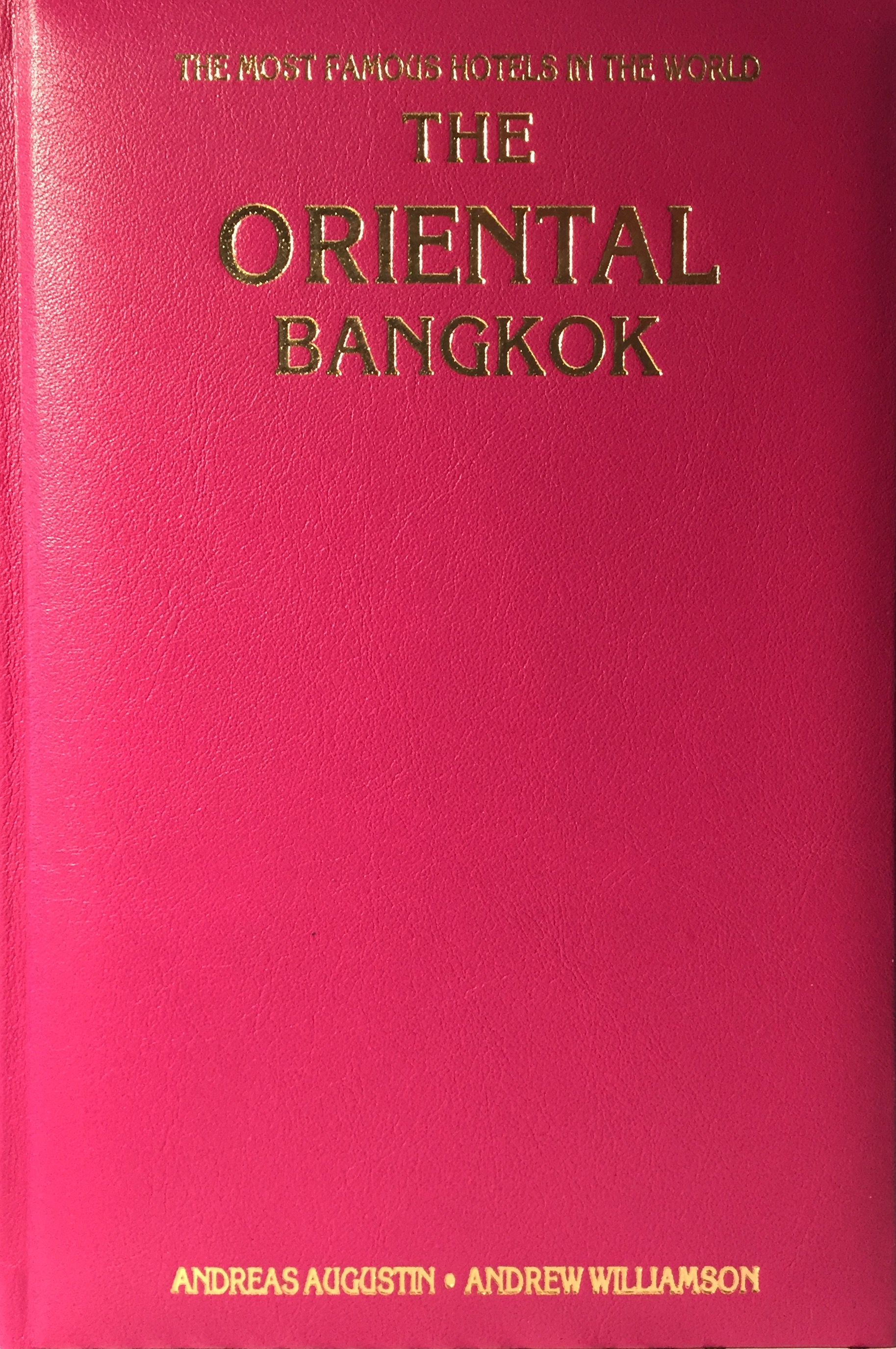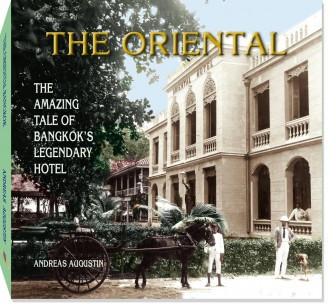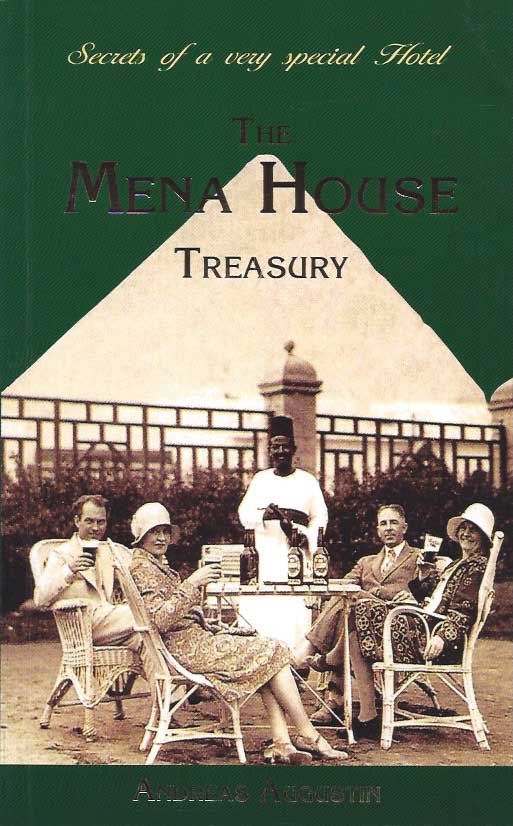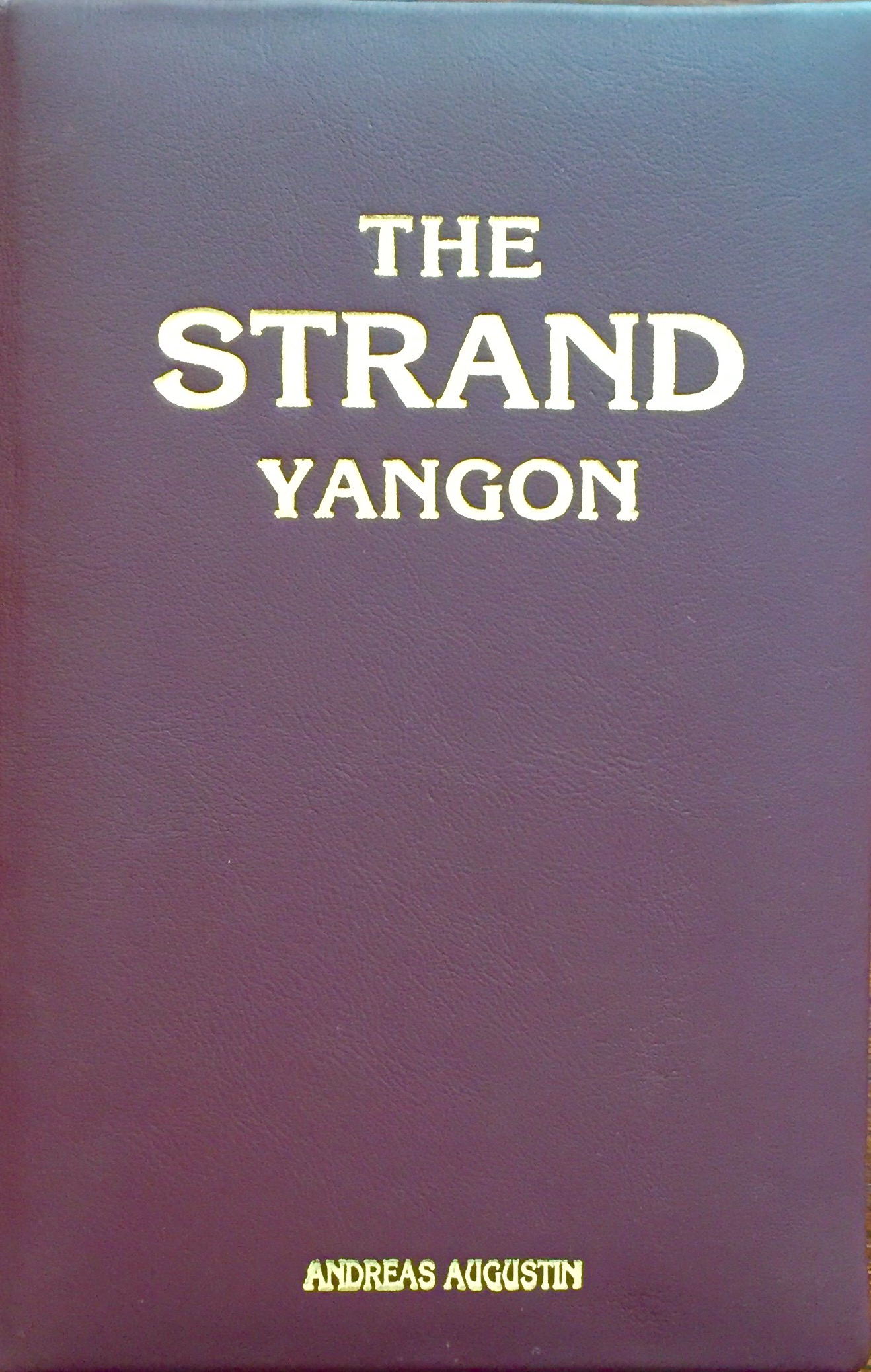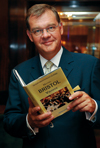Metropole – Hanoi, Vietnam (English)
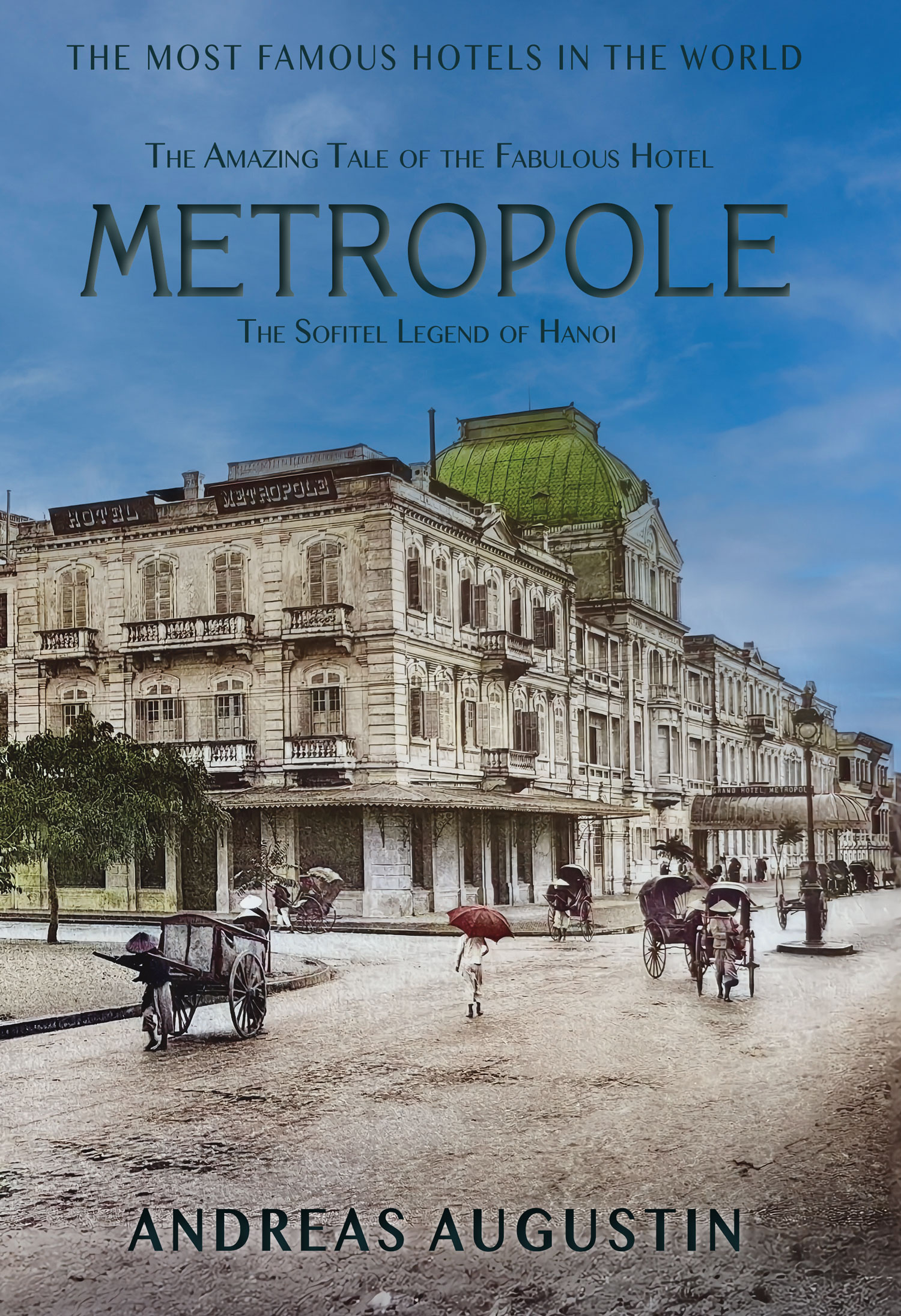
Author
Andreas Augustin
Pages
176
Photographs
Illustrations
over 350 historic and contemporary photographs and illustrations
Leather-bound edition
Yes
Binding
Hardcover (real cloth bound / gold stamping / dust jacket)
Includes
2 postcards, 2 reading marks for HIM and HER
ISBN
978-3-900692-21-6
Size/Weight
160 x 235 mm, 720 g
Related Hotel
Price: € 43.00
Add to cartAndreas Augustin manages to navigate through it without offending anyone. He sticks to the facts. He does not take sides. If his sympathy lies anywhere, it is with the Metropole, and no one can blame him for that. -- Torben Retboll / Amazon Revie
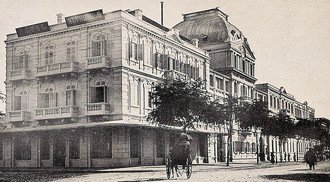
The 2025 edition has arrived!
Once again, the new edition of Hanoi Metropole includes a wealth of new material. Perhaps one of our greatest strengths in publishing is that every new edition feels like a completely fresh release. This time, new content comes from the archive of Josselin Varenne-Caillard, whose grandfather once managed the hotel. Additionally, there are new images from the hotel’s guestbook.
We’ve added 16 new pages, filled with fresh stories, expanded existing ones, and restored historical photographs. There’s always so much to do with a book like this, and it’s work that fills us with pride.
'For over 20 years this book is growing and growing. Each edition is carefully updated, it takes us sometimes 3-5 months to add all our new discoveries. For the 2019/20 edition the André Ducamp files were added. We were lucky to receive photographs from the first owner through his grand-grand daughter. Merci bien! And of coures there was the meeting between Donald Trump and Kim Jong-un ...
So, again we can say: Welcome to the Grand Hôtel Métropole Palace, as this wonderful hotel has been called on its opening day in 1901. Come and see the old colonists as they meet at the Café of the Metropole, sip a Nuoc-Soda and exchange the latest gossip. Stroll through the history of exotic Vietnam.
Encounter Gustave-Émile Dumoutier, the fabled French anti-imperialist who opened the hotel in 1901. Meet André Ducamp, Dumoutier’s wealthy partner, who ran the hotel for almost three decades. Here the first “moving pictures” were shown, long before Charlie Chaplin and his wife Paulette Goddard arrived in person (rumors still have it that they were on honeymoon.
Meet authors like Pierre Loti and Marguerite Duras, British dramatists Somerset Maugham and Noël Coward and of course the “war correspondent” Graham Greene. Read about Jane Fonda and Joan Baez in the bunker of the hotel during air raids in the horrifying days of the Vietnam war. Read about Doi moi, meaning renovation, the new slogan that brought the country irreversibly to a new path.
A path that lead to a total renovation of the Metropole. Finally meet the lovely people who make all this possible. The professionals behind the scenes. Welcome to the young country of the Vietnamese people with their natural talent for hospitality.
A book full of fabulous historic and contemporary photographs, presenting the story of one of the last grand hotels of the exotic East.
This is the latest - completely updated - edition of this successful book.
Look! The Red River!’ the driver exclaims. The legendary stream, with its reddish-brown, silt-laden water rich in iron oxide, gleams in the evening sun. Red indeed. We cross the bridge and swiftly reach the heart of Hanoi in the Metropole’s limousine. Passing lakes and tree-lined alleys, we glimpse old villas reflecting the city’s European past: bicycles, motorbikes, busy traffic. Ah – there is the exquisitely restored Opera House. Then the car pulls up in front of The Metropole. A friendly smile and a ‘welcome back’ greeting await me. Here I am.
I check into the Charlie Chaplin Suite and climb the stairs in the old wing. They creak and groan, as if narrating their first centenary.
Later, I stroll through the hotel’s Path of History, pass by the pool with its Bamboo Bar, greet the staff at the Spice Garden – the Vietnamese restaurant – call at angelina – cocktail bar, whisky lounge & restaurant, and pass through Le Beaulieu restaurant. Its sidewalk café, La Terrasse, causes a regular traffic jam every evening as throngs of guests converge to see and be seen.
Until 1888, an immense temple complex covered this area. The French destroyed it and built streets, government buildings, and the post office on it.
"After a visit to Hanoi, one is curious to learn what the French would have done to Singapore or Hong Kong if they had possessed them," penned Alfred Cunningham, founder of the South China Morning Post, in genuine admiration, in 1901.
After dinner, I take my first stroll in the mild Hanoi night. I walk towards the dyke that protects the city from the regular threat of floods by the Red River. Behind its walls flows the mighty waterway, once the only connection with the outer world.
I am blending back into the late 19th century. Here, boats arrived and passengers descended: Paul Bert, Paul Doumer, and the rest; gold-diggers of a bygone colonial era. Adventurers, civil servants, explorers, clergymen, teachers, and travellers. So many characters, so many destinies. On one of those jetties, early one morning, Gustave Dumoutier must have stood, too. Waiting.
That’s where our story begins.
Andreas Augustin
presents the history of the
Hotel Metropole, Hanoi
in the series
The Most Famous Hotels in the World™
Thanks to all the general managers of the hotel, who supported the continued research into the rich history of this icon of Asian hospitality industry. Spiritus rector of the book is Richard Kaldor, general manager between 1996 and 2000, who had the vision and enthusiasm to request a well researched history of his hotel. Greatest thanks to the board of directors of the S.E.M Thong Nhat Metropole Hotel Company Limited.
We thank the general managers of the hotel, in particular George Koumendakos, William Haandrikman, Franck Lafourcade, Gilles Cretallaz, Kai Speth (the driving engine behind the Path of History, the permanent history exhibition at the hotel, and the unearthing of the long hidden bomb shelter).
We thank HE Deanna L. Horton, HE Susan Boyd, former Ambassador of Australia to Vietnam, HE Serge Degallaix, former Ambassador of France to Vietnam, to Tore and Vigdis Sund, Michael Rastrup Smith, Sam and Rosetta Miller, Patrick Antona, Robert Farnsworth and Yasmine Bombardier. Un merci tout particulier à Didier Corlou, le premier chef cuisinier de l’hôtel nouvellement ouvert en 1991.
Credit must also go to Guy Poujoulat and his successors, Marc Bégassat and Charles-Henri Chevet, who – as resident managers – accompanied this project. Merci to Anthony Slewka, Joseph Colina, Carl Sladen, Thibault Souchon, André Bosia, Denis Groison, Hoang Anh Tuan, Arie Sunia, Léa Burel and all the others of the wonderful staff of the Metropole who makes each stay such a memorable one.
Credits to Sarah Grant who successfully set up the hotels PR office when so little was known about its past. The help of her successor Ms Nguyen Thanh Thuy and her assistant Nguyen Hai Au made work on this book so much easier. For the edition of 2008 we thank Nguyen Dinh Thanh. The 2010 and 2012/13 editions were in the hands of Ms Le Thi Nhung. 2014 were coordinated by Ms Huyen Ha and assisted by Ms Ly Le.
Further thanks go to Ricardo Perran, the first general manager of the hotel after its extensive renovations, and to his former assistant Edouard George for his collection of old photographs of the hotel and Hanoi. A word of special thanks goes to Dr Stein Tonnesson of the Nordic Institute of Asian Studies who helped persuade Richard Kaldor that in fact the hotel’s story was within reach, to Gerard Toupet, the general manager of the hotel Scribe in Paris, to Shimon Tokuyama of Mitsubishi Corporation and to Marc Charuel, Directeur de l’iconogarphie Valmonde.
Luong Ngoc Khanh, former front office and business development manager, supplied the most important assistance. It was good to talk to Frederick Rech, Richard Eliot, Le Hong Hai, Duong Trung Quoc of the Revolutionary Museum and Vu Quoc Khanh of ‘Viet Nam Pictorial’, Jeanne Loubet, Le Van Phuc, Do Thi Duong Minh, Mike Fogata, Madam Nguyen Thi Xuan Phuong, Maitre Duong Van Dam, Pierre Schoendoerffer, Tiana Thi Thanh Nga and James Compton. Greetings to Australia, where Beris L Gwynne and Sarah Hodgkinson recalled their days at the Metropole – then Thong Nhat Hotel – during the early 1970s. Thanks also to Pierre Marbote and to Jeanne Réau in Paris. Special thanks to US journalist Mark Sommer and all the others, who were not named before and deserve a deep bow for their very kind help.
Ronnie Tan Virata, Director of Engineering, was instrumental in setting up the Path of History at the hotel.
Photographs, drawings, maps and other illustrations: Imperial War Museum and British National Library, London; Famous Hotels Main Archives, Vienna; Archives Nationales, Paris; Centre des Archives d’Outre-Mer, Aix-en-Provence; Institute for information – Social & Science, Hanoi; National Library, Hanoi, Giovanni Di Giorgio, Northboer, Heimo Aga.
Collections Veronique Ducamp, Edouard George, Beris Gwynne, Peter Fleming, Cao Xuan Nha, Sarah Hodgkinson,
Archives of the Hotel Metropolel, Josselin Varenne-Caillard
Historic research assistance: Andrea Riegl, Tuan Thi Le Diem, Joao Mimoso
Production: Harrison Dolittle
Editor: Andrew Williamson and Thomas Cane
Edited by Thomas Cane; Historical advisor and curator of THE PATH OF HISTORY: Carola Augustin
There is a limited leather-bound edition available.
All rights in this publication are reserved. This book and no part of it, be it historic or contemporary images, text or quotes, may be reproduced, stored in a retrieval system or transmitted in any form or by any means, electronic, mechanical, photocopying, recording, or otherwise without the prior permission in writing of the copyright owner.
Important note to publishers
In particular all historic images were edited and restored by famoushotels and are as such subject to international copyright laws. For a maximum of quality they can be obtained from:
archives@famoushotels.org
www.famoushotels.org www.pathofhistory.com
© 1998–2024 / Andreas Augustin
ISBN 978-3-900692-21-6

